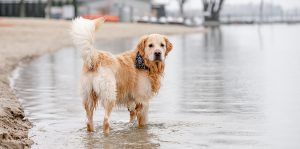Physical Fitness is as Important for Dogs as it is for People
Canines that maintain good physical health tend to live longer lives. Regular exercise keeps their cardiovascular system robust, reducing the risk of heart-related issues. This simple investment in playtime can significantly extend your dog’s life and quality.
 As dogs age, just like humans, they become susceptible to joint problems and arthritis. Regular movement and exercise help maintain joint flexibility. It’s a preventive measure that can save your dog from discomfort in their golden years.
As dogs age, just like humans, they become susceptible to joint problems and arthritis. Regular movement and exercise help maintain joint flexibility. It’s a preventive measure that can save your dog from discomfort in their golden years.
Beyond the physical benefits, a fit dog is a mentally healthy dog. Regular exercise not only burns off excess energy but also stimulates their minds. Mental stimulation is crucial for preventing boredom and destructive behaviors. A stimulated dog is less likely to engage in undesirable activities like chewing furniture or excessive barking.
Moreover, a well-conditioned dog tends to be more adaptable and sociable. Socializing during walks or playtime in the park exposes them to various environments, people, and other dogs. This helps build their confidence and reduces the likelihood of behavioral issues.
An often overlooked aspect is weight management. Due to our poor-quality food chain, obesity is a prevalent issue in humans but also among dogs, leading to a myriad of health problems. Regular exercise and a balanced quality diet are key to maintaining an optimal weight for your dog. It’s a proactive approach to prevent obesity-related conditions like diabetes and joint stress.
 Incorporating fitness into your dog’s routine doesn’t require elaborate equipment. Simple activities like brisk walks, fetching, or agility games can do wonders. Tailoring the exercise routine to your dog’s breed, age, and health status ensures it’s both enjoyable and safe.
Incorporating fitness into your dog’s routine doesn’t require elaborate equipment. Simple activities like brisk walks, fetching, or agility games can do wonders. Tailoring the exercise routine to your dog’s breed, age, and health status ensures it’s both enjoyable and safe.
As a responsible dog owner, prioritize your dog’s fitness and schedule regular play sessions, or walks. Remember, a tired dog is a happy dog. Their overall well-being is in your hands!
To summarize, canine fitness is a simple and easy approach to ensure your dog’s health and happiness. The benefits range from physical well-being and injury prevention to mental stimulation and social adaptability. By investing time in your dog’s fitness, you’re not just extending their life; you’re enhancing the quality of the years they have. Enjoy this time with your companion.
(excert from Peace River Search & Rescue spring ’24 newsletter)
 Your pets are important members of your family! This is why they should be included in your family’s emergency plan.
Your pets are important members of your family! This is why they should be included in your family’s emergency plan.


 As dogs age, just like humans, they become susceptible to joint problems and arthritis. Regular movement and exercise help maintain joint flexibility. It’s a preventive measure that can save your dog from discomfort in their golden years.
As dogs age, just like humans, they become susceptible to joint problems and arthritis. Regular movement and exercise help maintain joint flexibility. It’s a preventive measure that can save your dog from discomfort in their golden years. Incorporating fitness into your dog’s routine doesn’t require elaborate equipment. Simple activities like brisk walks, fetching, or agility games can do wonders. Tailoring the exercise routine to your dog’s breed, age, and health status ensures it’s both enjoyable and safe.
Incorporating fitness into your dog’s routine doesn’t require elaborate equipment. Simple activities like brisk walks, fetching, or agility games can do wonders. Tailoring the exercise routine to your dog’s breed, age, and health status ensures it’s both enjoyable and safe. Before you take the leap.
Before you take the leap.